Below are summaries from the National Significant Wildland Fire Potential Outlook, provided by the National Interagency Fire Center, for the period of June 2021 through September 2021. The full outlook can be located here.
Year-to-Date Statistics:
| Year-to-date statistics | Number of Fires | Acreage Burned |
| 2021 (01/01/21 – 06/01/21) | 24,949 | 687,017 |
| 2020 (01/01/20 – 06/01/20) | 14,844 | 439,422 |
| Percentage of 10-year Average | 116% | 61% |
Source: https://www.nifc.gov/fireInfo/nfn.htm
Observations in May:
The absence of critical fire weather patterns in areas with very dry fuels helped limit significant fire activity in May. Drought expanded and intensified over the West, especially in California. More than 87% of the West is now categorized in drought and over half the West is in the highest two categories of drought. Snowpack set new record lows in parts of the West, including the Sierra Nevadas. This represents the most expansive and intense drought for the West in a century.
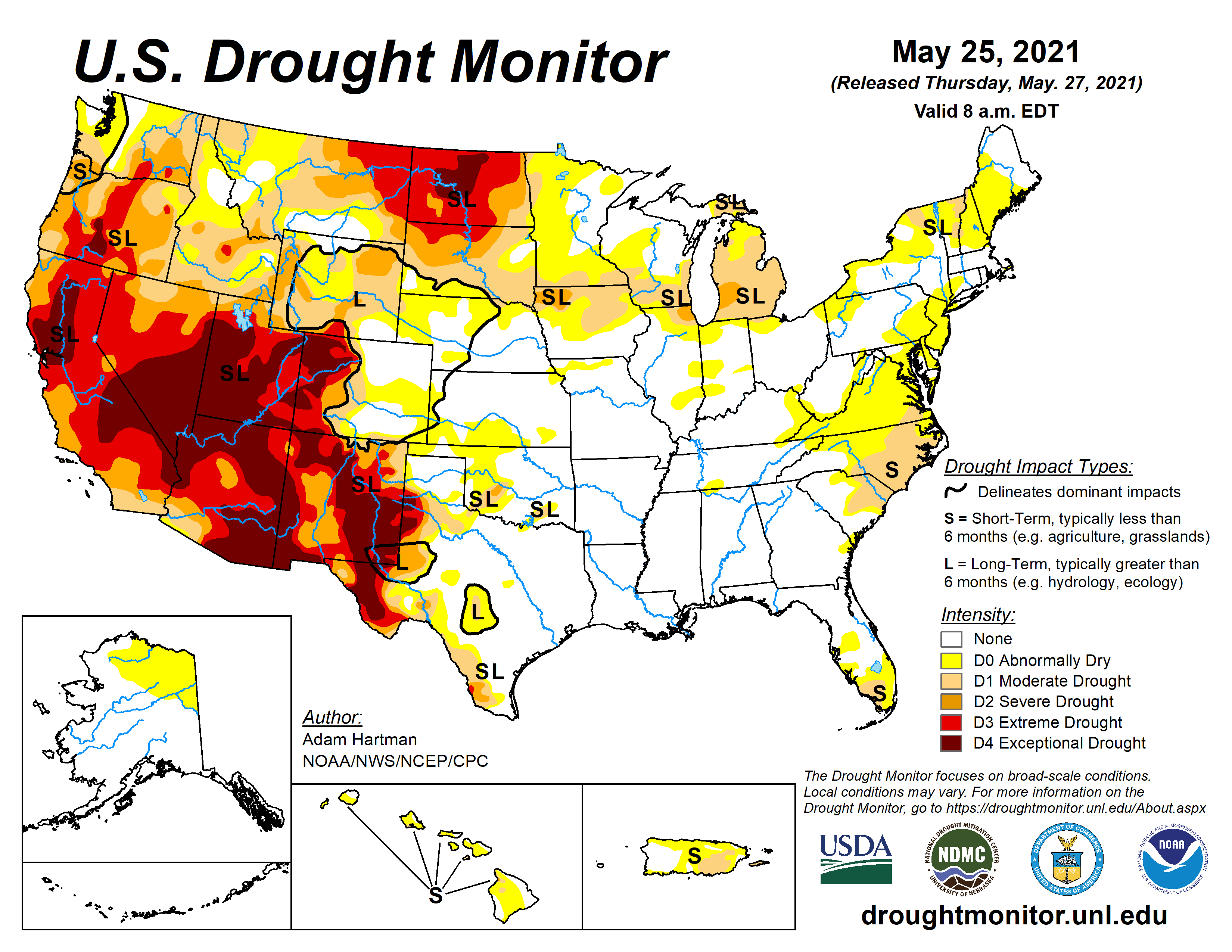
US Drought Monitor as of 25 May 2021
Wildland Fire Outlook for June-September:
Climate outlooks indicate warmer and drier than normal conditions are likely for much of the High Plains and West through summer continuing and exacerbating drought there. Near normal timing and precipitation is likely with the Southwest Monsoon in July, which should help alleviate drought conditions and significant fire activity, at least temporarily. La Niña conditions have waned, and sea surface temperatures are near to below average. It is possible that La Niña conditions could return later this year, but the forecast is uncertain.
The Southwest is forecast to have above normal significant fire potential through June before the Monsoon season arrives. Above normal significant fire potential will then spread north, into the rockies and the Great Basin through August, then return to normal in September. Central Oregon and southeast Washington will likely also be above normal fire potential around this time. California is likely to remain above normal for fire potential from July through the forecast period.
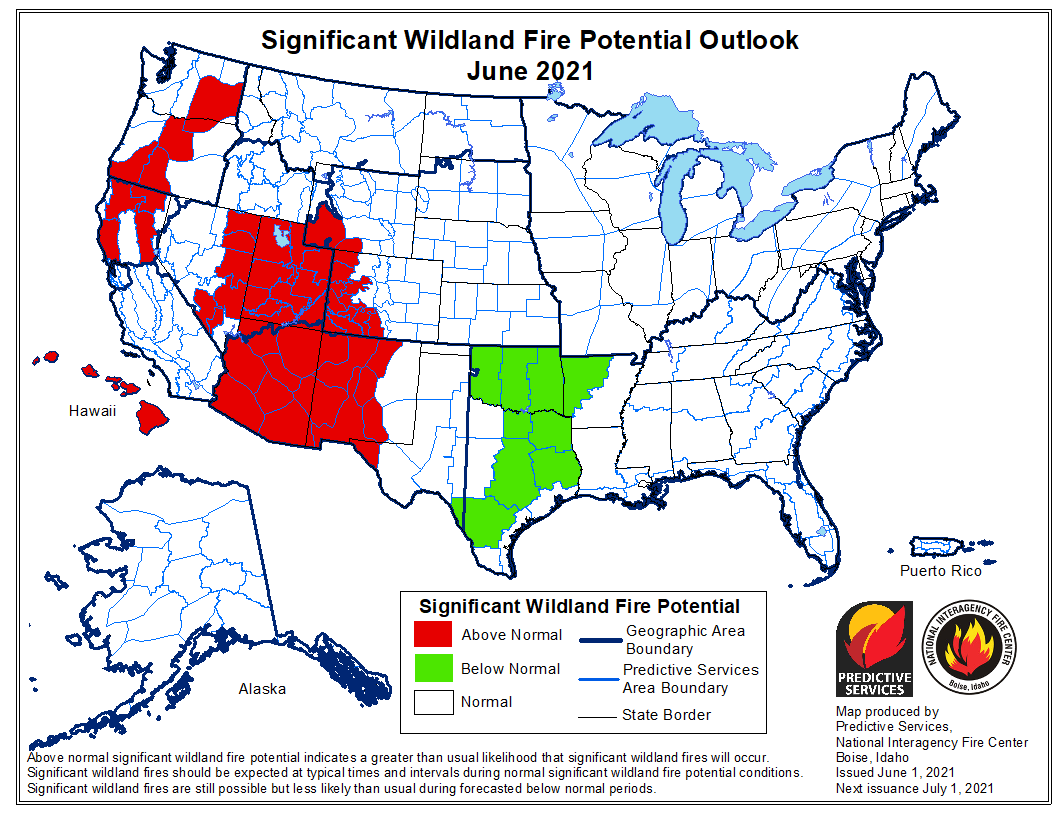
June 2021 Wildland Fire Potential Outlook
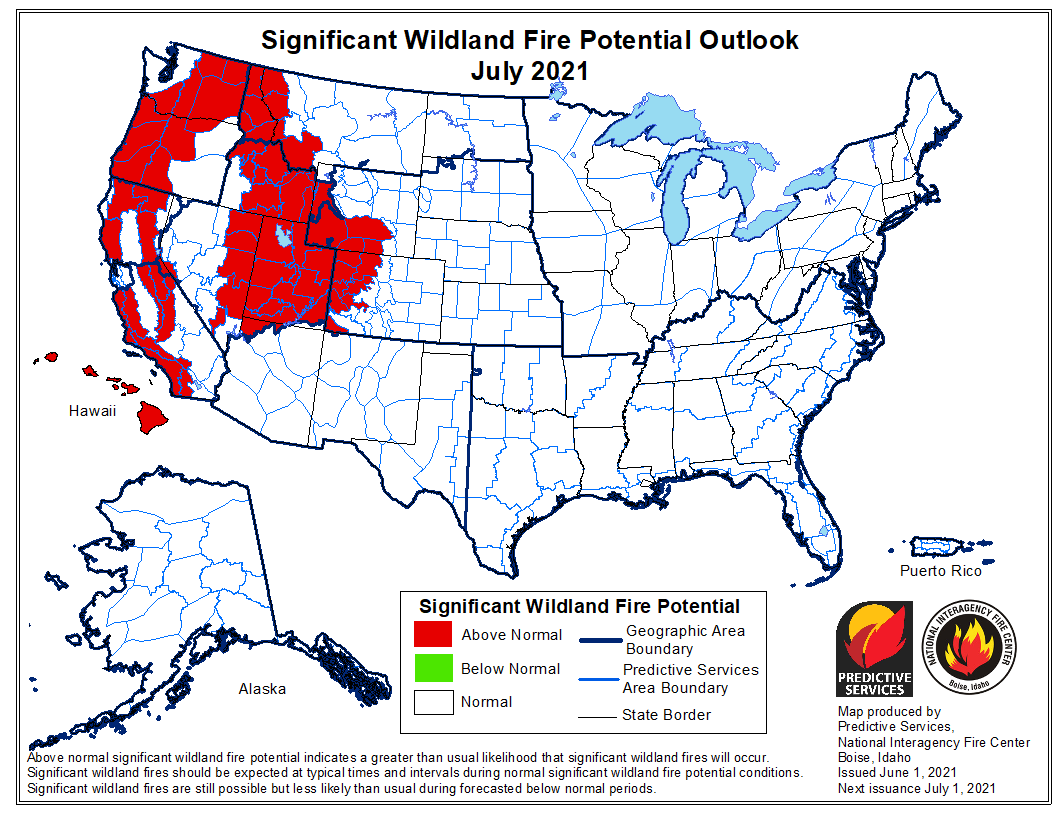
July 2021 Wildland Fire Potential Outlook
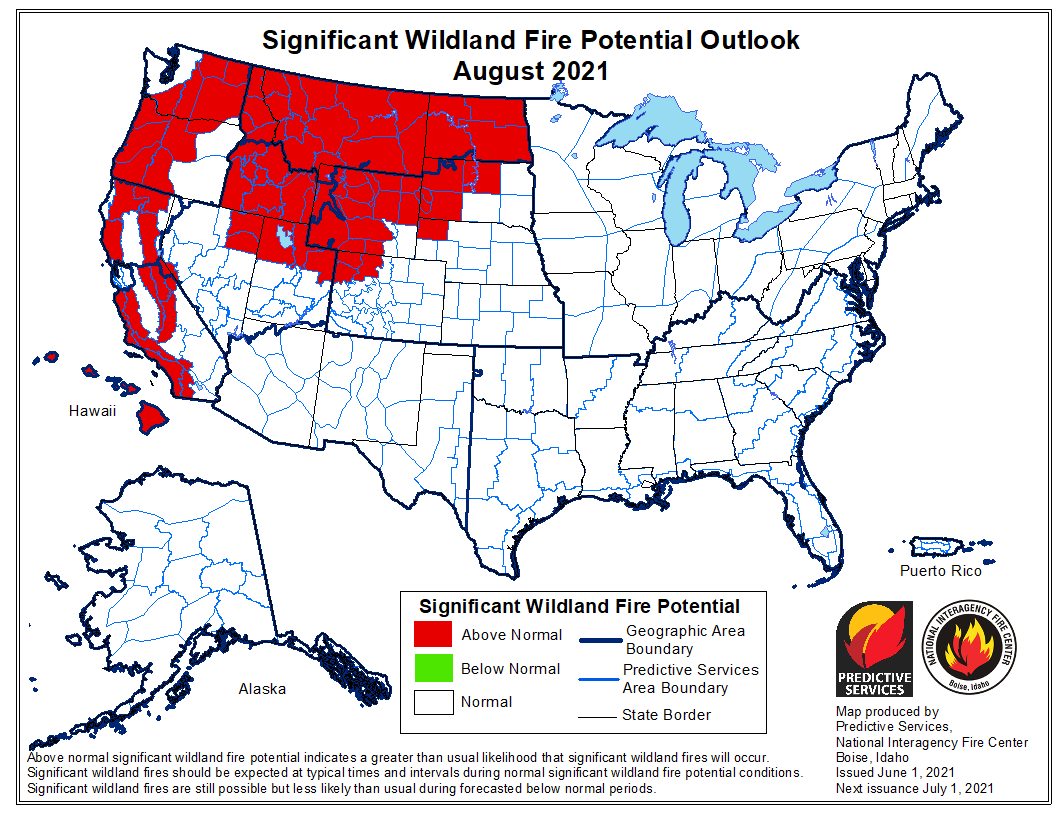
August 2021 Wildland Fire Potential Outlook
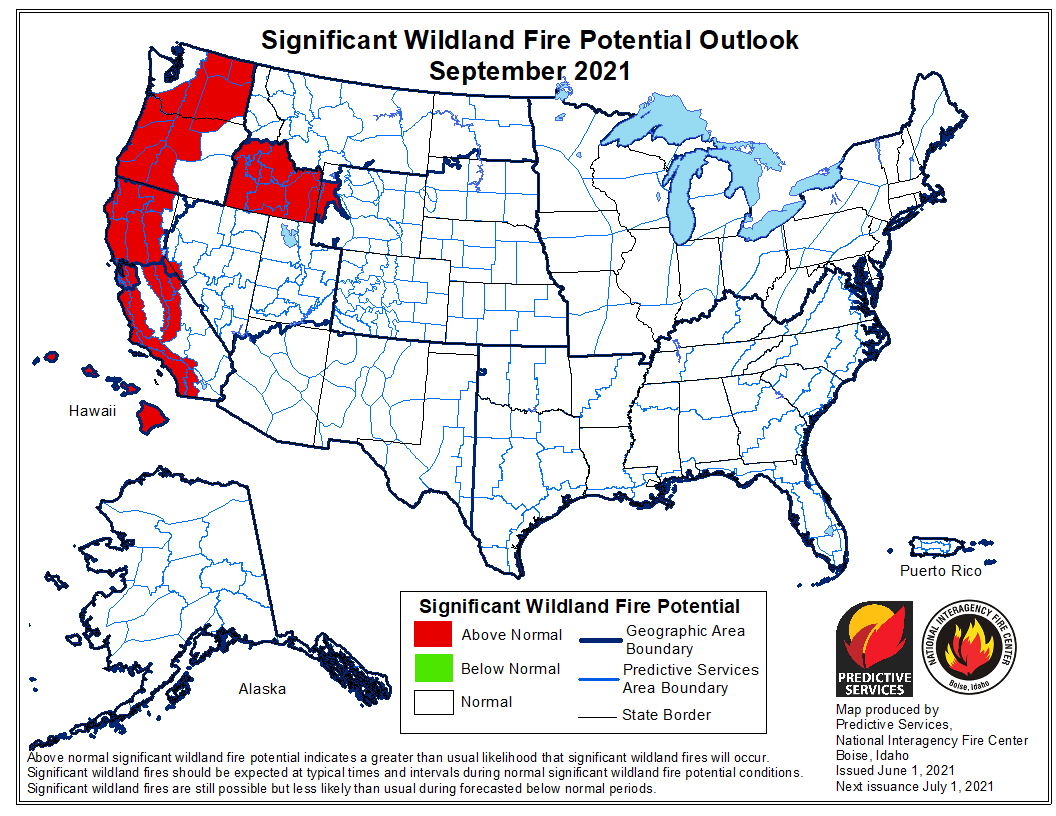
September 2021 Wildland Fire Potential Outlook
Source: NIFC




